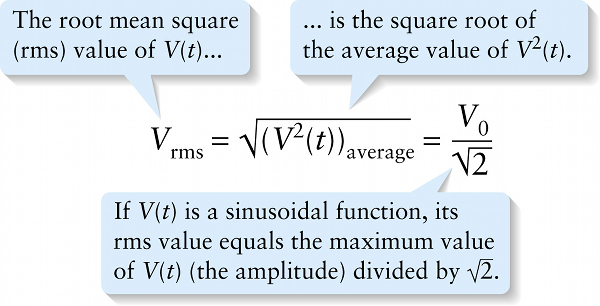Chapter 21. Root mean square value (21-5)
Question
BCGtxalH/k9q09uLAOkGPM3Hbh94aCR8qOGQGvJENtvsS/eWlJEgehRr8VhFqvFPrGvm0Q==
Question
2a3cXBVVWhVyBNlsINFkbJGh4MxGEMcfKcz+o6IQhOAnFfwBzy4IzGGxlNOF1Beu5OglF2n8lJD21ALdpz+8zA==
Question
XvhGyW1ZHb/WtpzNY3MIemnS8rWkw15jjvxfYte1I1D077qrDbEqlhLQyluauGX3oGY4NqwDqwFUaeqY0HpG2kQrw2XcS0S7LLqhtLWjKEHcNagYtckl2nVPMGOgBOL3ER/WJqJ4X4JHWQOwg1aUkzA1XYcElY9Yns5p/0po63xO1e8mbON29g==
Review
As an example, in the United States the standard value for the ac voltage supplied by a wall socket is 120 V; this is actually the rms voltage, so \(V_{\mathrm{rms}} =\) 120 V. The voltage amplitude, or peak voltage, is larger by a factor of \(\sqrt{2}\), so \(V_0 = V_{\mathrm{rms}}\sqrt{2} = (120\ \mathrm{V})\ \sqrt{2} = 170\ \mathrm{V}\).
.
